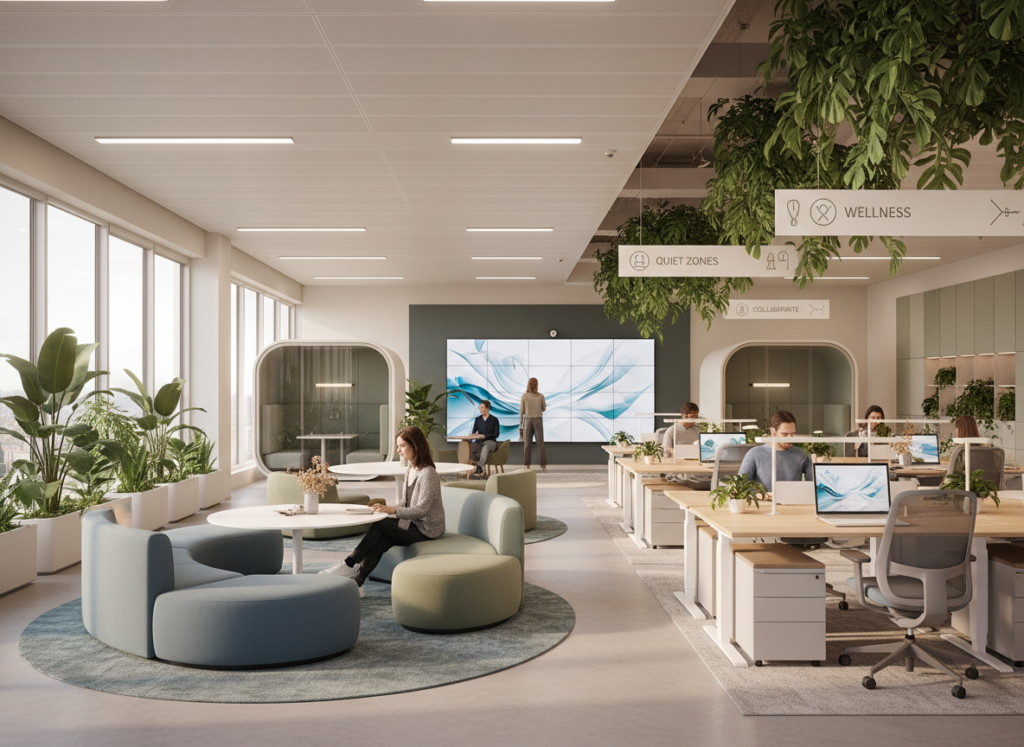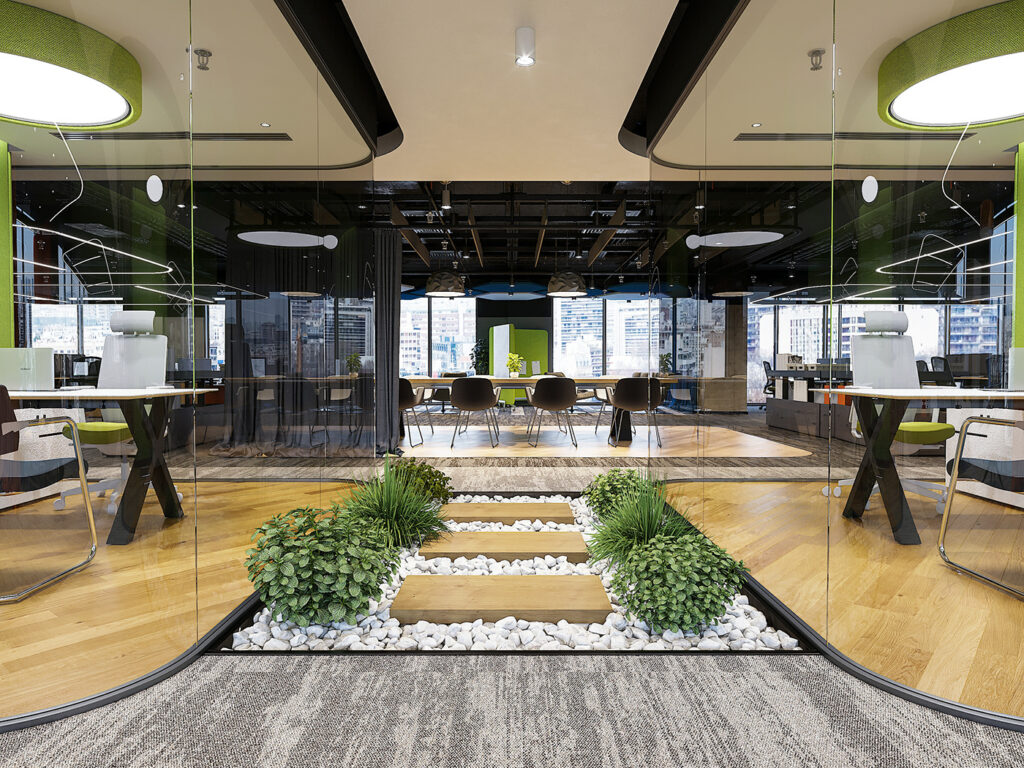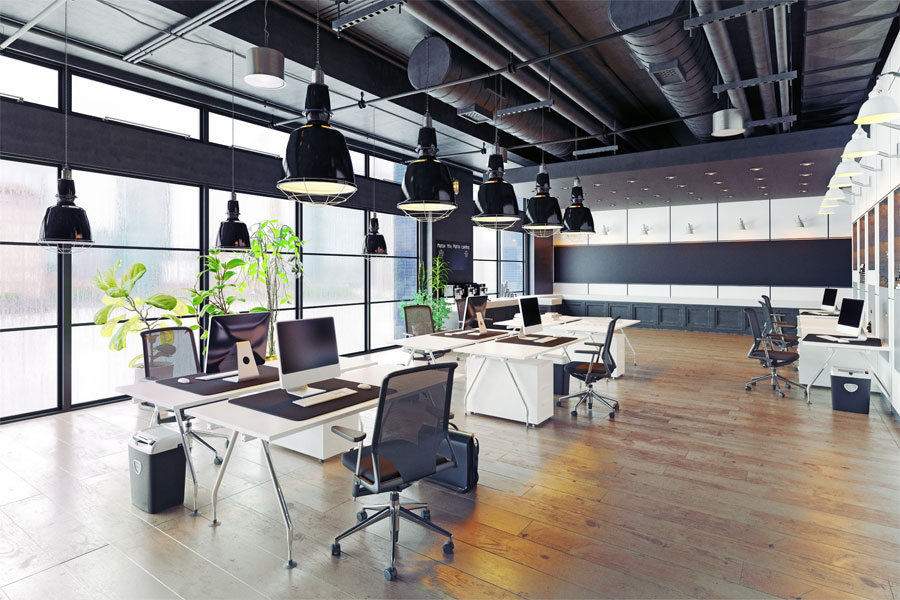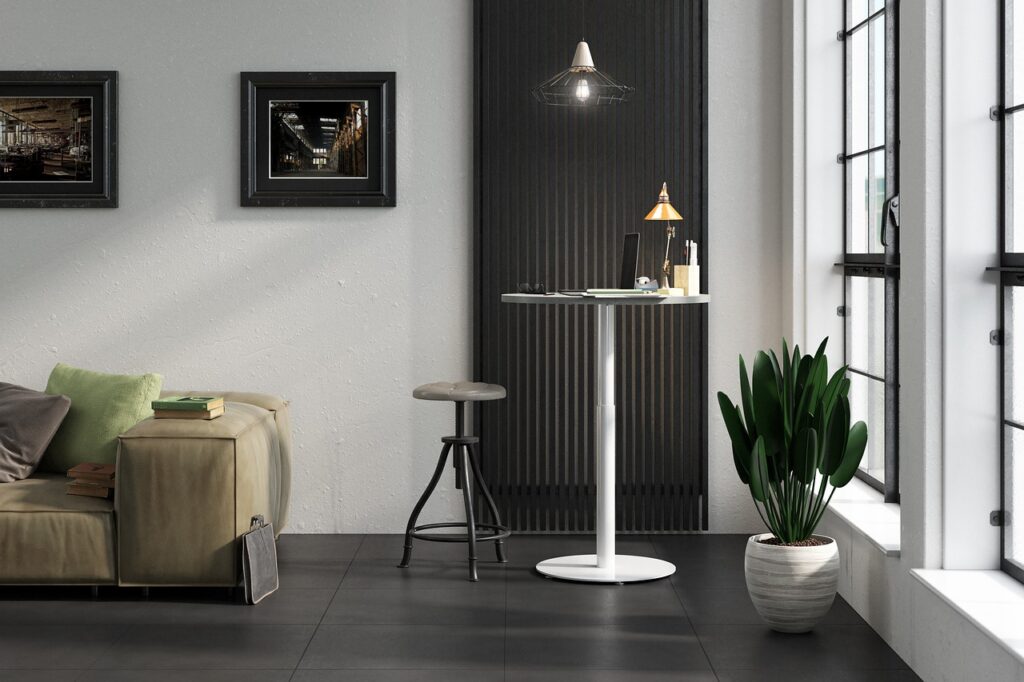Introduction
Every individual experiences the workplace differently, and modern office design in 2025 is finally beginning to reflect that truth. As organizations move away from uniform, one-size-fits-all layouts, there is a growing emphasis on neurodiverse-inclusive office design—a human-centric approach that supports employees with diverse cognitive and sensory needs. Whether someone is autistic, has ADHD, dyslexia, anxiety, or simply prefers certain environments over others, inclusive interior design allows people to work in spaces that help them think clearly, focus deeply, and feel comfortable. This shift is not merely aesthetic; it represents a strategic evolution toward healthier workplace culture, better employee well-being, and sustainable business performance.
Why Inclusive Workplace Design Matters
An inclusive workspace does more than improve comfort. It can transform an organization’s productivity, retention, and innovation. When employees’ sensory and cognitive needs are acknowledged, they are better able to concentrate, collaborate, and contribute without burnout or overstimulation. This leads to higher job satisfaction and lower turnover, because people feel genuinely understood and valued. Companies that adopt neuroinclusive workplace design often see enhanced creativity, as diverse thinking styles generate broader problem-solving and stronger innovation. Ultimately, inclusive design supports mental health, reduces stress, and strengthens workplace well-being, which directly impacts a company’s long-term success.
Designing a Neurodiverse-Friendly Workplace
Designing a neurodiverse-friendly workspace requires a deeper understanding of how people interact with physical environments. A well-planned office gives employees the option to move between different types of spaces depending on their task and sensory preferences. Some individuals thrive in quiet, low-stimulus rooms where they can focus without interruption, while others work best in social, collaborative zones. Similarly, lighting plays a powerful role in workplace comfort. Natural daylight remains essential, but adjustable task lighting is critical for employees who are sensitive to brightness or flicker. When workers can modify their own lighting levels, they experience fewer headaches, improved concentration, and greater emotional balance.
Noise is another major factor affecting cognitive and sensory comfort. Effective acoustic design for workplaces involves using soft materials, acoustic wall panels, carpets, and thoughtful zoning to reduce disruptive sound. Separating lively collaboration spaces from quiet work areas helps employees manage their energy and stay productive. Many organizations are also introducing calming breakout and sensory-regulation spaces where people can reset when they feel overwhelmed. These areas often include biophilic elements—plants, natural textures, and soothing colors—that support nervous system regulation and reduce anxiety. Visual clarity is equally important. Offices designed with clear wayfinding, color-coded pathways, intuitive layouts, and limited visual clutter help minimize cognitive overload, especially for employees who struggle with navigation or spatial orientation. Adaptive, ergonomic furniture further enhances comfort by allowing individuals to shift posture, stand, stretch, or sit in ways that support their physical and sensory needs.
Case Example
The benefits of neurodiverse-inclusive office design extend far beyond interior aesthetics. Organizations that adopt this approach enhance overall employee experience, strengthen innovation, and build a more empathetic work culture. They also gain a competitive advantage in employer branding, attracting top talent who are seeking workplaces that prioritize well-being and psychological safety. Most importantly, companies see improved retention and long-term engagement because employees feel supported rather than expected to conform to environments that work against them.
Benefits of Neurodiverse-Inclusive Design
The benefits of designing neurodiverse-inclusive workspaces go far beyond comfort—they directly influence organizational performance, culture, and long-term growth. When employees are placed in environments that align with their sensory and cognitive needs, their ability to focus, process information, and collaborate naturally improves. This leads to a more engaged and productive workforce, where people feel confident and supported rather than overwhelmed or overstimulated. Inclusive office design also strengthens creativity across teams because diverse thinking styles are given the room and resources to flourish. As employees feel more valued and understood, company loyalty increases, resulting in higher retention and reduced hiring costs. From a brand perspective, organizations that invest in inclusive interiors signal that they care about employee well-being, positioning themselves as modern, responsible, and future-ready. Over time, these workplaces cultivate healthier cultures, stronger relationships, and a more resilient, empowered team—making neurodiverse-inclusive design a powerful strategic advantage rather than just an aesthetic choice.
How Companies Can Begin
Businesses do not need a complete renovation to start building more inclusive workplaces. The process can begin with simple steps such as collecting anonymous feedback to understand sensory needs, adding noise-canceling booths, improving lighting controls, introducing biophilic design, or reorganizing layouts to reduce visual chaos. Partnering with designers who specialize in inclusive workplace interiors ensures that the redesign supports cognitive diversity rather than relying on assumptions. Over time, these incremental changes create workplaces where everyone—not just the majority—can thrive.
Conclusion
Designing for neurodiversity is not a temporary trend. It is the future of workplace evolution and a crucial investment in employee well-being, organizational culture, and sustainable performance. Companies that embrace neurodiverse-inclusive office design will lead the next era of work, where every individual has the space and support needed to perform at their best.
At AirBrick Infra, we create future-ready, sensory-inclusive commercial interiors that celebrate cognitive diversity and empower all employees to succeed. If you are planning to transform your workplace into an inclusive, high-performance environment, our team is ready to help you build a space where every mind thrives.
Frequently Asked Questions
Ques 1 : What is neurodiverse-inclusive office design?
Ans 1 : Neurodiverse-inclusive office design is a workplace design approach that supports different cognitive and sensory needs through adaptable lighting, acoustic comfort, visual clarity, flexible zones, and ergonomic furniture.Who benefits from a neuroinclusive workspace.
Ques 2 : Who benefits from a neuroinclusive workspace?
Ans 2 : Neurodivergent employees, including those with autism, ADHD, dyslexia, sensory sensitivities, and anxiety, benefit significantly. However, all employees experience improved comfort, focus, and well-being.
Ques 3 : What are essential elements of a sensory-friendly workplace?
Ans 3 : Key elements include natural and adjustable lighting, quiet focus areas, acoustic zoning, biophilic materials, intuitive wayfinding, and adaptive furniture that allows movement and posture changes.
Ques 4 : Does inclusive workplace design improve productivity?
Ans 4 : Yes. Research and workplace reports consistently show that sensory-aware, inclusive office environments increase focus, reduce distractions, and enhance overall productivity and job satisfaction.
Ques 5 : Is it expensive to create a neuroinclusive office?
Ans 5 : It does not have to be. Organizations can start with small upgrades, such as acoustic panels, noise-canceling booths, better lighting control, or sensory-friendly breakout spaces, and scale improvements over time.
Summary
As workplaces evolve in 2025, companies are increasingly embracing neurodiverse-inclusive office design to support employees with diverse cognitive and sensory needs. Unlike traditional work environments that assume everyone focuses and processes information the same way, neuroinclusive workspaces prioritize flexibility, well-being, and human-centric design. By incorporating features such as adaptive lighting, biophilic elements, acoustic balance, clear wayfinding, and ergonomic furniture, organizations create interiors that help employees work comfortably and productively without sensory overload.
A neuroinclusive workplace delivers measurable benefits. Employees experience improved focus, better task completion, and reduced stress, leading directly to higher performance and retention. Teams with diverse thinking styles collaborate more creatively, fueling broader innovation and problem-solving. Organizations also strengthen their employer brand, demonstrating a commitment to psychological safety and inclusion.
Businesses do not need a full-scale renovation to begin. Small enhancements like noise-managed zones, sensory-friendly breakout areas, and adjustable task lighting can create meaningful positive change. As companies face increasing competition for talent and rising awareness around workplace well-being, investing in inclusive commercial interiors becomes a strategic advantage, not a trend.
By designing workplaces that celebrate neurological diversity, employers build stronger cultures where every individual—regardless of sensory or cognitive style—can thrive. This is the future of work, and its impact reaches far beyond the physical office.





